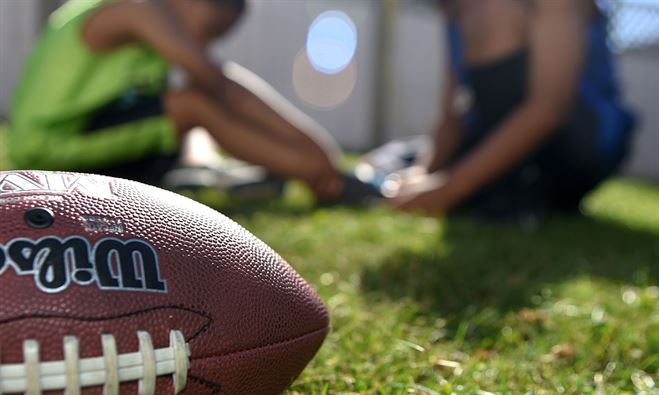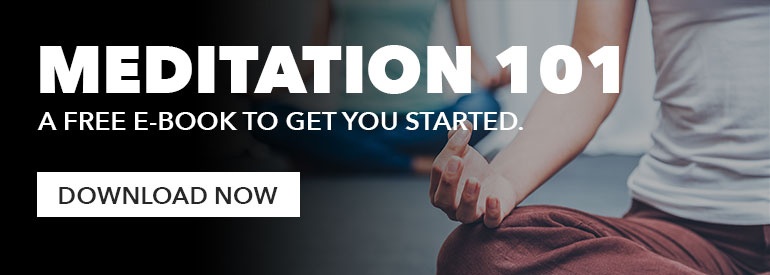 Reading Time: 9 minutes
Reading Time: 9 minutesI wasn’t a great athlete growing up. Being a scrawny kid with so-so hand-eye coordination wasn’t a great combination for sports performance. By high school, most of my athletic endeavors were already finished.
But while I wasn’t blessed with prominent athletic genes, my stubborn will power was a good fit for success in other ways of movement like general fitness and martial arts. Working out gave me a satisfaction in that while I couldn’t will myself to be a great athlete, nothing could stop me from getting bigger, faster, and stronger.
Except me, that is.
As I continued my fitness journey into my twenties, I developed a passion for lifting weights and playing softball. I made continuous strides in getting stronger and beefing up my slight frame. Despite my scrawny status, I even won a bench press competition in my weight class.
Then, after one too many bench presses and softball games, I tore my rotator cuff.
I felt a constant dull ache in my shoulder and arm, like I had permanently thrown my arm out. Suddenly there was no more bench press and no more softball — just the depressing drudgery of a stationary bike.

After making so much progress, facing an abrupt change in my lifestyle and identity was devastating. Furthermore, that injury was a mere precursor of things to come — low back problems, sciatica, ruptured eardrums, strained muscles, and more. It turns out a lifelong commitment to fitness is not simply sheer will power and a linear path of progression, but a game of peaks and valleys.
The reality is that injury, setback, and failure are a part of any improvement process. The setbacks need not be an endpoint, though. They can, in fact, be the beginning of your next step in fitness.
Here are the six steps to follow to make the most of your injuries and even become better for them.
1. Accept Your Situation and Take Responsibility
A few years ago, my friend Dan tore his Achilles tendon during basketball. A group of us were playing a heated game of pick-up five-on-five when Dan went down, clutching his leg in agony, screaming, “Who pushed me?!” But no one was within ten feet of him.
Dan’s reaction was natural. When we experience hurt or harm, our instant reaction is to look for something or someone to blame. While bad equipment, our own stupidity, or even the negligence of others can be the culprit for injury, in my experience both personally and professionally, the vast majority of injuries are simply accidents.
Regardless of who is at fault, it ultimately doesn’t matter. The sooner we accept full responsibility for our plight, then the sooner we can begin the work in recovery and healing. When we are mired in a state of anger and resentment, we stay stuck on square one. Without the proper mindset, we can’t begin the journey toward mending our broken body and wounded ego.
The Lesson: While the cultural norm may be to play the blame game, the sooner you can move past blame and into acceptance, the sooner you can get to work.

2. Act Quickly
The optimal window in accentuating and getting a jump-start on the healing process is a short one. The first 48-72 hours post injury are critical in reducing inflammation and accelerating recovery.
The generally accepted principle for treatment for sprains and strains is paying the PRICE (protection, rest, ice, compression, and elevation). In addition to the application of a PRICE protocol, it’s also good to avoid HARM (heat, alcohol, running, massage).
While PRICE is a widely accepted methodology for injury, a recent review by The National Athletic Trainers’ Association suggests that NSAIDS (non-steroidal anti-inflammatory medications) are a better option for the reduction of inflammation than ice. However, the study cautions against using ice and NSAIDS beyond the 48-hour mark as they can slow the recovery process by suppressing the bodies’ natural inflammation response.
While pain management and mitigation of swelling may be a necessity at first, the human body’s natural inflammation response complimented by advanced methods of recovery are critical in the healing process. It is important that you seek treatment after initially addressing your injury so you can select proper recovery modalities and perform appropriate activity to stimulate tissue repair and collagen formation and continue the healing process.
The Lesson: Try PRICE and NSAIDS, and if you’re still in pain after 48 hours, switch to acetaminophen (Tylenol), which doesn’t affect inflammation. Also be sure to begin recovery treatments and stimulate movement of fluid out of the injured area.

2. Take a Break and Reflect
The same study by the National Athletic Trainers’ Association referenced above concluded that some gentle exercise and light movement might also be beneficial in the first 48-72 hours post injury. A. Lynn Millar, author of the American College of Sports Medicine’s guide to sprains and strains wrote, “By contracting and relaxing a joint, you improve blood flow, which improves healing.”
Many people make the mistake of completely stopping all activity, which can be counterproductive. That said, it’s always a good choice to let others take care of you, get some rest, and do your best to manage your acute pain. In taking a pause, you can begin the process of mental assessment necessary in picking yourself back up.
In dealing with injury, it’s important to control the controllables. You can’t control if your knee is injured, but you can manage your mental approach and keep your wounded ego in check. To do that, it’s helpful to see injury as a forced vacation and a time to pursue “active” rest. Depending on your injury, walking or basic mobility work might be a perfect daily activity. When you’re given the loud and clear message that your body needs rest (which is often what an injury is), then take it.
The Lesson: Capitalized on your time off to work on your mental resilience and to gain “health literacy” by learning more about your body and your injury. After all, the biggest predictor of injury is previous injury.

3. Look for the Silver Lining
By using your down time to become a student of your body, you’ll gain wisdom and develop an appropriate path to take moving forward so you don’t revisit your trauma. Furthermore, a physical injury presents the perfect opportunity to exploring the interconnectivity of body, mind, and spirit.
One way to start working on linking your mind and body is to think of injury as metaphor. While your body being broken doesn’t necessarily mean your mind is broken, too, in my experience, the body can also be a wise teacher. For instance, I’ve had several hamstring issues and I have used that time in recovery to also assess where in my emotional life I am “hamstrung.” When dealing with my chronic low back issues, I have taken time to marinate on the burdens that I carry. Perhaps with a shoulder injury you are “shouldering” too great of a load in your life?
While such examples may seem far-fetched to some, the significance of the mind-body connection is rooted in hard science. Negative emotions such as anger, anxiety, and depression correlate to how the heart functions and increase the risk of heart attack and stroke. Conversely, several prominent studies confirm the link between a positive mental attitude and accelerating health and healing.
The lesson: A physical injury can present the opportunity to dig deeper in your life, to assess what may be causing you harm, and to help you heal faster.
4. Plan Your Recovery and Recover Actively
When you think of yourself simply as a patient, then surgery and physical therapy can seem like things happening to you versus something in which you are an active participant. But even after surgery or physical therapy is complete, your work is just beginning. For the most successful healing, you need to have a plan for the entirety of your recovery process.
When we define our goals in sport and fitness, we often put a lot of thought into our plan. How many reps and sets should we do? How much to eat? Why we don’t take a similar approach to recovery is a head scratcher.
Many injuries will require several months to allow for your full recovery. With that in mind, think about planning a recovery schedule the way you would a weekly workout regimen. For instance:
- Monday, Wednesday, Friday: Alternating light cardio (swim, elliptical, stationary bike), contrasting hot and cold post exercise, infrared sauna.
- Tuesday: massage and chiropractic care
- Thursday: acupuncture
Nutrition and mindfulness are also paramount. Granted, not everyone has unlimited time and resources to put into recovery. But taking the time to plan can help you overcome those obstacles and will help you succeed in the long run.
Furthermore, many modalities of recovery from trigger point therapy to corrective exercises can be done at home. Nutritionally, considering things like an ALCAT blood test to see what food intolerances you might have and/or following the Whole Life Challenge nutrition guidelines, as eliminating common trigger foods might assist your body with inflammation.

5. Get Back Up
While injured, you might not be able to participate in the activity you love. Depending on the severity of your injury, the possibility may also exist that you’ll never reach the same level of performance again. Such a concept can be terrifying and daunting. For many of us, it can force us to question the core of our identity.
But there’s always a new road, a new path to take, and a new identity to make. Injury simply exacerbates questions we all will have to address sooner or later. As human beings and decaying material organisms, at some point we will have to come to grips with our true physical identity — not merely what our body looks like or the sport we play. No one is immune from aging and atrophy. Injuries simply provide us with an opportunity to do some work on accepting this ahead of schedule.
The Lesson: Rather than defining your limitations and ruminating on what you can’t do anymore, the critical question that will determine how the rest of your physical life plays out is, “What can I do?” After my rotator cuff injury, I bought my first road bike. Cycling a on a smooth road was one of the few things I could do, so I embraced my new activity with vigor and enthusiasm.
Injury = Opportunity
I’ve never had an injury that I truly regret because every injury provides the opportunity to grow, learn, and gain wisdom. That said no one likes to hear, “Everything happens for a reason,” in the middle of setback or trauma.
Instead of getting fueled by blame and anger or pretending that everything happens for a reason without really digging deeper, take a break, listen to your body for the lessons it can provide, and get to work. Outline the steps to take to get moving forward again, and set your focus on what you can do.










